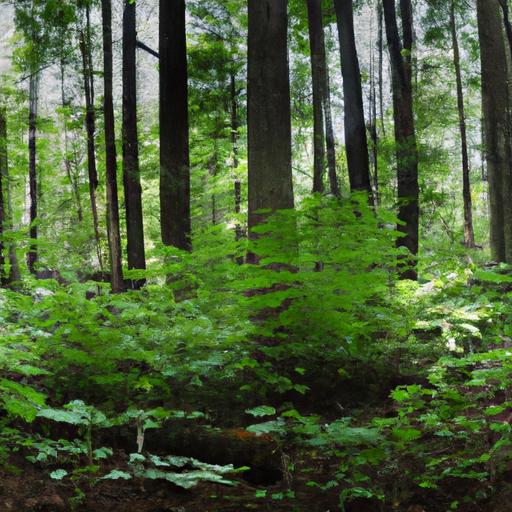A Information To Free Longlegs Viewing: Exploring Habitats And Observing These Fascinating Arachnids
A Information to Free Longlegs Viewing: Exploring Habitats and Observing These Fascinating Arachnids
Associated Articles: A Information to Free Longlegs Viewing: Exploring Habitats and Observing These Fascinating Arachnids
Introduction
With enthusiasm, let’s navigate by way of the intriguing subject associated to A Information to Free Longlegs Viewing: Exploring Habitats and Observing These Fascinating Arachnids. Let’s weave attention-grabbing info and provide contemporary views to the readers.
Desk of Content material
A Information to Free Longlegs Viewing: Exploring Habitats and Observing These Fascinating Arachnids

Harvestmen, generally often known as longlegs, daddy longlegs, or harvest spiders, are fascinating arachnids usually mistaken for spiders. In contrast to spiders, they lack venom glands and silk-producing spinnerets. Their lengthy, spindly legs and endearingly awkward gait make them fascinating topics for remark. The most effective half? Watching these creatures is solely free, requiring solely a bit of data of their habitats and a eager eye. This complete information will equip you with the knowledge you should find and observe longlegs of their pure setting with out spending a dime.
Understanding Longlegs Habitat Preferences:
The important thing to discovering longlegs lies in understanding their most popular habitats. These arachnids are remarkably adaptable, however sure environments constantly provide increased possibilities of recognizing them. Their distribution is world, excluding Antarctica, that means alternatives for remark exist worldwide, although particular species differ by area.
1. Forests and Woodlands: Deciduous and coniferous forests are prime areas. Longlegs thrive within the damp, shaded environments offered by the forest ground and undergrowth. Search for them beneath logs, rocks, leaf litter, and inside crevices in timber. The decaying natural matter gives ample meals sources (primarily small bugs and decaying plant matter) and shelter from predators.
2. Meadows and Grasslands: Open grasslands, notably these with tall grasses and wildflowers, will also be productive looking grounds. Longlegs make the most of the vegetation for camouflage and safety. Search rigorously amongst the plant stems and blades of grass, taking note of areas with dense vegetation.
3. Gardens and Parks: Surprisingly, even well-maintained gardens and parks can harbor longlegs. Areas with undisturbed leaf litter, compost heaps, and stone partitions provide ultimate microhabitats. Verify beneath flowerpots, unfastened stones, and inside backyard sheds. The presence of bugs and different small invertebrates attracts longlegs to those human-modified environments.
4. Caves and Rock Formations: Some species of longlegs choose darker, extra sheltered environments. Caves, rock crevices, and overhangs provide safety from harsh climate and predators. Nevertheless, accessing these areas requires warning and respect for the setting. At all times guarantee you’ve acceptable security measures in place earlier than exploring caves or rock formations.
5. Close to Water Sources: Many longlegs species are drawn to moisture. The neighborhood of streams, ponds, and even damp areas in gardens could be fruitful looking grounds, particularly during times of excessive humidity. Search for them close to the sides of water our bodies, amongst the vegetation, and beneath rocks close to the water’s edge.
Optimizing Your Longlegs Viewing Expertise:
Whereas discovering longlegs is comparatively easy, optimizing your viewing expertise requires some preparation and consideration:
1. Timing is Key: Longlegs are extra energetic throughout hotter months, notably within the night and at night time. Nevertheless, they are often discovered in the course of the day, particularly in shaded areas. Early morning or late night provide the most effective possibilities of remark, as they’re much less more likely to be disturbed by direct daylight.
2. Persistence and Commentary: Longlegs are comparatively slow-moving creatures. Take your time, and observe rigorously. Keep away from sudden actions, as this will startle them and trigger them to scurry away. A mild strategy and affected person remark will considerably improve your possibilities of a profitable sighting.
3. Make the most of Magnification: A easy magnifying glass can vastly improve your viewing expertise. This lets you observe the intricate particulars of their physique construction, leg actions, and feeding habits.
4. Images (Elective): In the event you get pleasure from pictures, capturing photographs of longlegs could be a rewarding expertise. Macro pictures is good for capturing close-up photographs of those fascinating creatures. Keep in mind to respect their setting and keep away from disturbing them in the course of the course of.
5. Respect Their Habitat: At all times bear in mind to deal with the setting with respect. Keep away from damaging vegetation or disturbing different wildlife. Depart the world as you discovered it, making certain the longlegs’ habitat stays undisturbed.
Moral Issues and Security:
Whereas observing longlegs is a innocent exercise, it is essential to stick to moral and security pointers:
- Don’t deal with longlegs unnecessarily: Though they’re innocent, dealing with them can stress the creatures and doubtlessly harm their delicate legs.
- Keep away from disturbing their habitat: Depart the setting as you discovered it. Keep away from trampling vegetation or damaging their shelters.
- Pay attention to your environment: When exploring pure habitats, be aware of potential hazards reminiscent of toxic vegetation, bugs, or uneven terrain.
- Respect personal property: At all times acquire permission earlier than getting into personal land.
- Observe Depart No Hint ideas: Take away any trash you might have introduced with you and go away the world cleaner than you discovered it.
Past Easy Commentary: Studying Extra About Longlegs:
As soon as you have efficiently positioned and noticed longlegs, you possibly can additional develop your data by researching particular species in your area. Quite a few on-line assets, area guides, and scientific publications present detailed details about longlegs biology, conduct, and ecology. Contributing to citizen science initiatives that contain longleg remark will also be a beneficial approach to additional your understanding and contribute to scientific analysis.
Conclusion:
Observing longlegs is a rewarding and accessible exercise that requires minimal tools and expenditure. By understanding their habitat preferences and using a bit of persistence, you possibly can simply discover and observe these fascinating arachnids in your native setting. Keep in mind to at all times respect their habitat and apply accountable remark to make sure the continued enjoyment of those creatures for generations to return. So seize your magnifying glass, put in your strolling footwear, and embark in your free longlegs viewing journey!


/GettyImages-84286999-584c9f1d3df78c491e17a05c.jpg)





Closure
Thus, we hope this text has offered beneficial insights into A Information to Free Longlegs Viewing: Exploring Habitats and Observing These Fascinating Arachnids. We admire your consideration to our article. See you in our subsequent article!